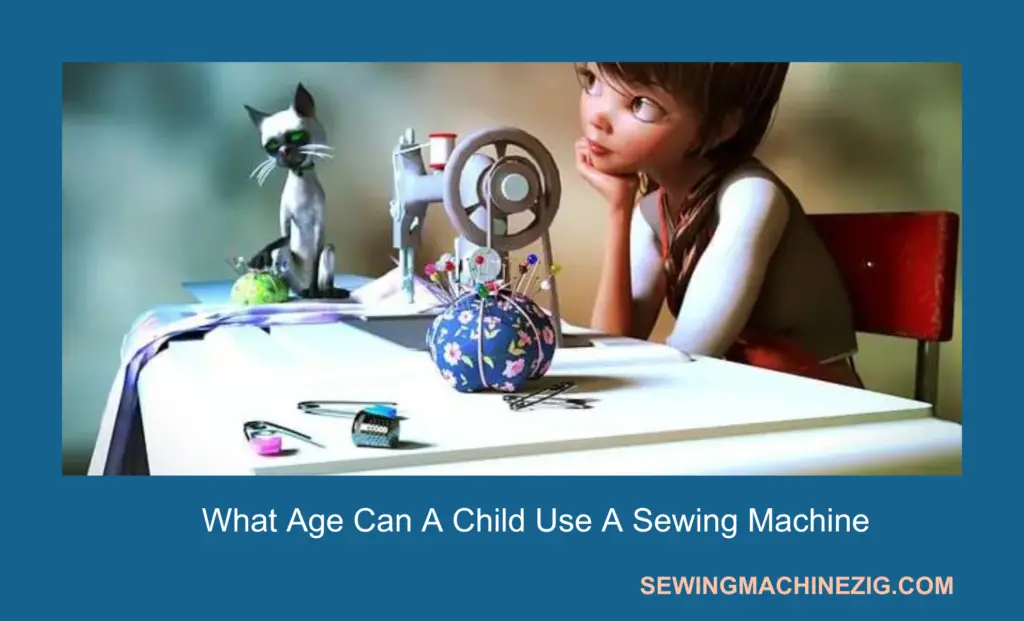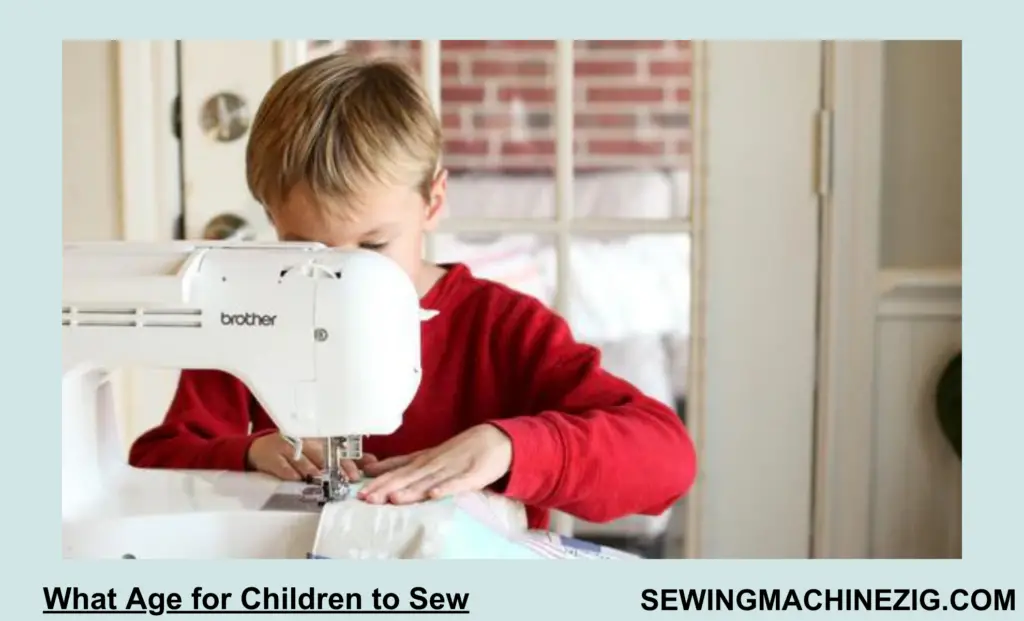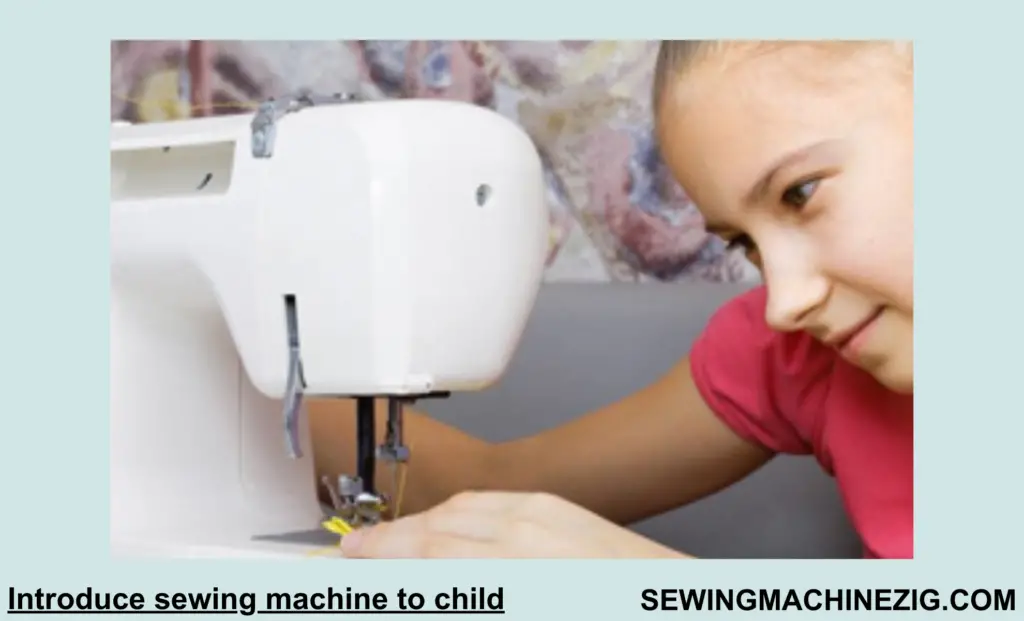
Sewing is a useful skill that can be developed at any age. It allows us to create unique and personalized clothing, accessories, and home decor items. While traditionally considered a hobby for adults, sewing can also be a great activity for children. Many parents wonder at what age can a child use a sewing machine. It’s important to consider a child’s physical and cognitive development, as well as their interest and enthusiasm for the craft. In this article, we will explore the factors to consider when deciding whether a child is ready to start using a sewing machine and provide some tips for teaching sewing to children.
Thank you for reading this post, don't forget to subscribe!First and foremost, it’s important to consider the child’s physical and cognitive development. They should be able to comfortably reach the foot pedal and see the needle area without straining their neck. They should also have the hand-eye coordination and fine motor skills necessary to operate the machine safely and effectively. In this article, we will discuss a guide about What age can a child use a sewing machine.
Sewing can be a fun and rewarding skill for children to learn. It can teach them valuable lessons in patience, creativity, and problem-solving. But it is important to know at what age can a child use a sewing machine.
What Age for Children to Sew

In general, children around the age of 8 or 9 are ready to start using a sewing machine with adult supervision. However, some children may be ready earlier or later depending on their individual development.
Children’s concepts on sewing
Start with basic:
If a 4, 5, or 6-year-old expresses an interest in sewing, parents can start by introducing them to hand sewing. Using a large, blunt needle and yarn or embroidery floss, they can practice basic stitches such as the running stitch or the backstitch on a piece of felt or a scrap of fabric. This can help build their hand-eye coordination and fine motor skills, as well as their understanding of basic sewing concepts.
When teaching a child to use a sewing machine, it’s important to start with the basics. Teach them about the different parts of the machine and how they work, as well as the importance of safety precautions such as keeping fingers away from the needle.
It’s also a good idea to start with simple projects that will allow the child to practice using the machine without becoming overwhelmed. Some ideas include creating a simple tote bag, pillowcase, or apron.
Overall, with proper supervision and guidance, children can start using a sewing machine at a relatively young age. It’s a great way to foster their creativity and develop useful skills that will last a lifetime.
At what age can a child use a sewing machine?
Introduce sewing machine to child

Once the child has demonstrated an understanding of hand sewing, parents can start to introduce the sewing machine. It’s important to start with a child-friendly machine that is easy to use and has safety features such as finger guards and speed control.
Parents should also start with simple projects that will allow the child to practice using the machine without becoming overwhelmed. Some ideas include creating a simple felt ornament, a small drawstring bag, or a simple stuffed animal.
It’s important to supervise the child closely and teach them about the importance of safety precautions such as keeping fingers away from the needle. With patience, practice, and proper supervision, young children can learn to use a sewing machine and develop a lifelong love of sewing.
Few things you need to know to ensure:
Child safety and success
Sewing is a wonderful hobby that can teach children valuable skills such as patience, creativity, and problem-solving. Whether your child is interested in hand sewing or using a sewing machine, there are a few things you need to know to ensure their safety and success.
Choose the Right Equipment
When starting out, it’s important to choose age-appropriate equipment. For hand sewing, use blunt needles and embroidery floss or yarn. For machine sewing, choose a child-friendly machine that is easy to use and has safety features such as finger guards and speed control.
Start with Simple Projects
To build confidence and avoid frustration, start with simple projects that your child can complete quickly. Consider making a simple felt ornament, a small drawstring bag, or a simple stuffed animal.
Teach Basic Safety Precautions
Before starting any project, it’s important to teach your child about basic safety precautions. This includes keeping fingers away from the needle, turning off the machine when not in use, and never running the machine without adult supervision.
Supervise Closely
Always supervise your child closely when they are sewing, whether by hand or with a machine. Make sure they understand the importance of safety precautions and are following them at all times.
Encourage Creativity
Sewing is a great way for children to express their creativity. Encourage them to choose their own fabrics and designs, and let them experiment with different colors and textures.
Celebrate Success
When your child completes a project, take the time to celebrate their success. Display their creations proudly and encourage them to continue practicing and learning new skills.
Sewing with kids can be a fun and rewarding experience for both children and adults. By following these tips, you can help your child develop valuable skills and a lifelong love of sewing.
Safety Equipment for safe sewing with kids
When it comes to knowing what age can a child use a sewing machine, safety is a top priority. Here are some important safety equipment and precautions to consider:
Age-appropriate equipment:
Ensure that the sewing machine is age-appropriate and has safety features such as finger guards and speed control. Consider starting with a child-friendly machine that is easy to use and has fewer features.
Safety goggles:
Children should wear safety goggles to protect their eyes from flying debris, such as broken needles.
Needle threader:
Use a needle threader to help children thread the needle, which can reduce the risk of injury from a needle prick.
Iron and ironing board:
An iron and ironing board are essential for pressing seams and completing projects. Make sure that children are supervised when using the iron.
Scissors:
Children should use age-appropriate scissors that are sharp enough to cut fabric but have rounded tips to prevent injury.
Sewing gloves:
Consider using sewing gloves to protect your fingers from the needle.
Adult supervision:
Children should never use a sewing machine without adult supervision. An adult should be present to guide the child, monitor the sewing process, and ensure that safety precautions are followed.
Note:
It’s important to remember that every child is different and what age can a child use a sewing machine, some may not be ready to use a sewing machine even with the appropriate safety equipment and adult supervision. Start with hand sewing to help build their skills and understanding of basic sewing concepts before introducing them to a sewing machine. With proper equipment and precautions, sewing can be a fun and safe activity for children of all ages.
Conclusion
What age can a child use a sewing machine largely depends on their individual maturity level and skill development. While there is no specific age requirement for using a sewing machine, it is important to ensure that children have the necessary motor skills, focus, and understanding of safety precautions before allowing them to use one.
Children as young as six years old have been known to successfully use sewing machines with proper supervision and instruction, while others may not be ready until they are closer to their teenage years. It is recommended to start with simple projects and gradually introduce more complex ones as the child gains experience and confidence. I hope now you’re fully aware of What age can a child use a sewing machine.
At what age can a child use a sewing machine?
FAQs:
Q: What is the ideal age for a child to start using a sewing machine?
A: There is no specific age requirement for using a sewing machine. It largely depends on the child’s individual maturity level and skill development. Children as young as six years old have been known to successfully use sewing machines with proper supervision and instruction, while others may not be ready until they are closer to their teenage years.
Q: What motor skills should a child have before using a sewing machine?
A: Before a child starts using a sewing machine, they should have well-developed fine motor skills, which include hand-eye coordination, finger dexterity, and the ability to manipulate small objects. They should also have the good hand strength to be able to control the fabric and operate the machine’s foot pedal.
Q: What safety precautions should be taken when a child uses a sewing machine?
A: Parents and caregivers should ensure that the child is equipped with proper safety equipment, such as finger guards and safety glasses. They should also supervise the child at all times and ensure that the machine is set up correctly and is in good working order. The child should be taught how to properly thread the machine, how to use the foot pedal, and how to keep their fingers and clothing away from the needle.
Q: How can I introduce my child to sewing?
A: Parents can start by introducing their child to hand sewing, which can be done with a simple needle and thread. Once the child has mastered basic hand-sewing skills, they can be introduced to a child-friendly sewing machine. Simple projects, such as making a small pillow or a simple garment, can help build the child’s confidence and provide a sense of accomplishment.
Q: What are the benefits of teaching a child to sew?
A: Teaching a child to sew can promote creativity, problem-solving skills, and a sense of accomplishment. It can also improve hand-eye coordination, fine motor skills, and concentration. Sewing is a valuable life skill that can be used to create handmade gifts, mend clothing, and even pursue a career in the fashion industry.



